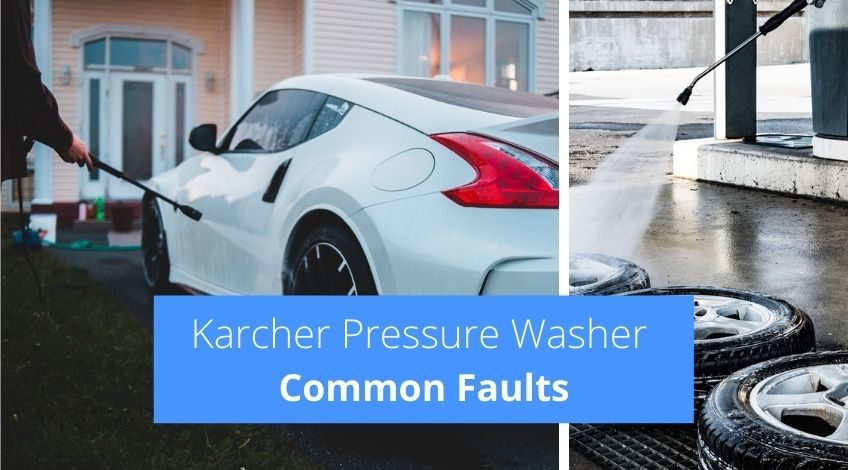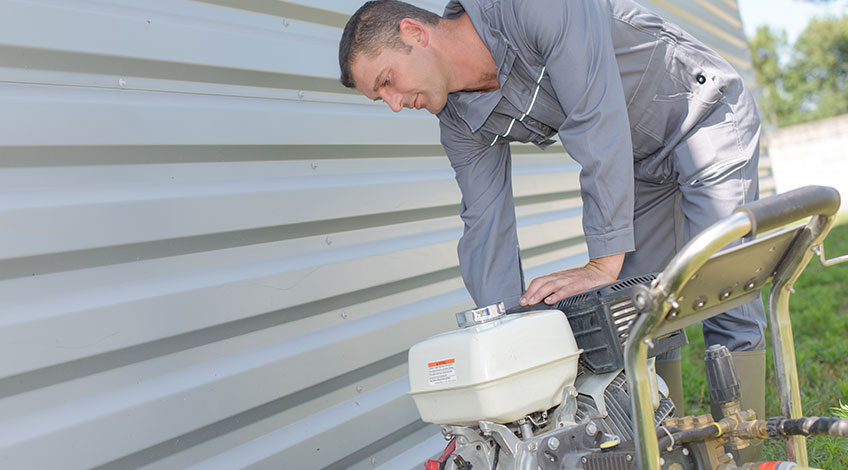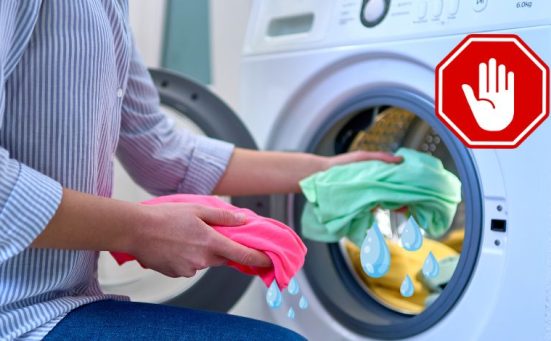
Karcher Pressure Washer Common Faults (Common Problems, Solved)
Karcher have been manufacturing pressure washers for more than 60 years, making them one of the world leaders when it comes to pressure washers. With over 1,300 patents for designs and improvements they’re a pretty safe bet when it comes to buying a pressure washer. However, things can, and do go wrong and it’s usually at the most inopportune moment.
That’s exactly why we’ve put this problem solving page together, here you’ll find the solutions to the most common faults experienced by karcher pressure washer users. Some are more difficult to identify than others, but wherever possible we’ve given the easiest solution so you can get back to pressure washing in the least amount of time possible.
Please note: If you’re looking to buy a new pressure washer, you’ll want to read this guide first.
Karcher Pressure Washer Troubleshooting Guide

Let’s start with the most common fault experienced by Karcher pressure washer owners. These are sticking bypass valves, pulsing and air blocks. The first steps to curing these common faults are:
- Unplug the pressure washer from the electricity supply.
- Remove the high pressure (black) hose.
- Connect the garden hose to the pressure washer inlet.
- Turn on the tap to supply the hose with water.
- Without doing anything else, allow water to flow through the machine for 5 minutes minimum.
- Connect the high pressure (black) hose.
- Press the trigger on the spray gun. This will draw water into the high pressure hose and the trigger.
- Plug the electric cable back in and turn on the electricity supply.
- Turn the pressure washer on using the dial.
- Press the trigger again, the machine should now be operating normally.
If things are still not working properly, try these easy fixes.
Vibrating Pressure Washer
If performing the actions above didn’t cure your pressure washer from vibrating. The problem could be caused through insufficient water flow. Check your outdoor tap is fully open and that the garden hose has no kinks or leaks.Another reason for the pressure washer vibrating could be the hose diameter is too small. Replace the garden hose with a ¾ inch hose, this should solve the problem.
Pressure Washer Pulsating
If your pressure washer is pulsating while on standby,check the water supply. If the tap is not fully open or the garden hose is kinked or leaking, this can cause the machine to pulsate.
If the pressure washer is pulsating while in operation, it is usually caused by a blockage in the nozzle or accessory. If it is the nozzle, use the tool provided by Karcher, or fashion one from a paper clip by opening one end. Simply push the wire into the nozzle and wriggle it about to dislodge any blockage, then pull the trigger to release the dirt from the nozzle.
The Pressure Washer Cuts Out Whilst Inuse
If your pressure washer cuts out while you are using it, it’s probably an electrical fault. The easiest one to check is the plug, have you over stretched the cable and prized the plug slightly from the socket? Also you should check any extension cord as they should have a constant 13 amp rating and be no longer than 10 metres (30 ft). Check your operating instruction manual for correct specs.
No Water From The Lance
If you press the trigger and the lance doesn’t produce any water spray, it’s probably blocked at the tip. Use the wire clip to clear any dirt or debris, and in future avoid dropping the lance on the floor when not in use. Always be sure to return it to its storage slot when you’re finished using it.
Low Water Pressure When In Operation
If your Karcher pressure washer has low pressure when you’re using it,the cause could be a worn stop/start valve. Try squeezing the trigger five times quickly this should free up the valve.
No Water Pressure
The most common cause for no pressure is a damaged unloader valve. Check for any damage to seals and springs or give readjusting your unloader screw a try.
Inconsistent Pressure
This is usually caused by the unloader valve being calibrated wrongly. Check your Karcher instruction manual and adjust the calibration in the unloader valve.
No Detergent Available (Even When Detergent Bottle Is Full)
If you have sufficient detergent in the bottle and yet none is coming through, it could be a couple of things. Firstly make sure the detergent suction tube is connected correctly. If the detergent is too thick, try diluting it with water and see if this makes any difference. Check and clean the filter on the detergent suction tube, turn the spray to low pressure and try again.
Karcher Pressure Washer Leaking
Always be sure to secure all connections including the garden hose, the pressure hose and the spray gun. If after securing tightly you notice any leaks it could be the washers need replacing. If the water leak is coming from the water pump check that the fittings are tight, if they are and it’s still leaking contact Karcher for servicing.
Oil Leaks From The Water Pump
If you notice any oil leaking from the water pump, call Karcher for servicing, don’t try to repair it yourself as this could invalidate your guarantee.
Motor Doesn’t Start
If the motor doesn’t start, check that you have switched the machine to “on”. Check the cable is plugged into the power socket and the socket is turned on. Try plugging into a different power socket and see if this makes any difference.
Make sure your extension cable is no more than 10 metres (30 ft) in length. Check if the fuse or circuit breaker needs resetting.
The Pressure Washer Is Working But Doesn’t Remove Surface Dirt
The most obvious cause for this is you are using a nozzle of insufficient pressure. Try going up one and see if this solves the problem.
If after all this, you still have a problem, it’s time to contact Karcher directly and ask for their advice.
Also, follow us on Pinterest ...




My Karcher K5.20 will not run after being stored for a number of years. It has had very little use. Could it be the starting solenoid?